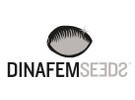Drip irrigation systems are based on micro-irrigation, a watering method that is widely used in agricultural crops in arid regions which are characterised by frequent water restrictions.
Drip irrigation is by far the most widely used micro-irrigation method in intensive agriculture. Easy to operate, the system consists of a network of irrigation pipes that are placed next to the crop and perforated according to the number of plants and their distribution in the growing area. The drippers need to be close to the root system of the different plants so that these can access the water supply and feed on the nutrients it contains.
In short, drip irrigation is a system that allows to keep the plants hydrated and fed with the exact amount of water and nutrients necessary for optimal plant development. Dinafem has written a background on the drip iirrigation.
A little background
Micro-irrigation has been used since ancient times. Back then the method involved burying water-filled clay pots in the substrate so that the water seeped gradually through the pores of the pot into the soil.
Drip irrigation saw a resurgence in 1860, when German experts started to experiment with "subirrigation", a technique that involved the use of clay pipes and that allowed both for soil watering and drainage. The 1920s was the decade of perforated pipes, which were tested initially in Germany. Meanwhile in America experiments involved mainly porous fabric pipes. The invention of plastic after World War II allowed significant improvements to irrigation systems aimed at greenhouses, both in Europe and in the U.S.
Technologized drip irrigation as we know it today was created by Israeli engineer Simcha Blass and his son Yeshayaju in 1959, when they developed the first official experimental system together with their associates from irrigation company Netafim. Blass and his team were the first to patent a surface drip irrigation emitter, and the system proved to be a great success in the late 1960s, with excellent results in South and North America, in Australia and in many other agricultural regions around the world.
Pros
- The automation of the watering process saves time
- Reduced use of water and fertilisers
- Reasonably priced – high-quality, affordable systems are relatively easily available
- All the plants get the same exact amount of water and nutrients, which results in more homogeneous crops
- The balanced supply of water, fertilisers and oxygen makes for faster plant development
- The substrate gets only the required amount of nutrient solution, which significantly reduces the risk of fungal growth
- Suitable for small and large crops
Cons
- Before you opt for a model, you'll have to take the time to make sure it is reliable, well designed and equipped with high-quality filters that prevent the drippers from getting clogged.
- Drip irrigation systems require rigorous maintenance. This includes regularly cleaning the filters, checking the proper functioning of the drippers and the connections to the power supply and thoroughly cleaning the circuit after each growing cycle. Also, you'll need to remove built up residues from the irrigation network – e.g. mineral salts, algae – before you start a new crop in order to have a fresh base to work from.
- Drip irrigation requires specific skills so that the plants get the necessary amount of nutrient solution for proper development throughout the various phases of their life cycle.
For more information:
Dinafem
support@dinafem.org
dinafem.org/
